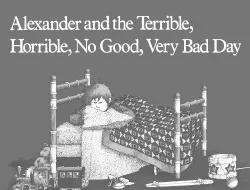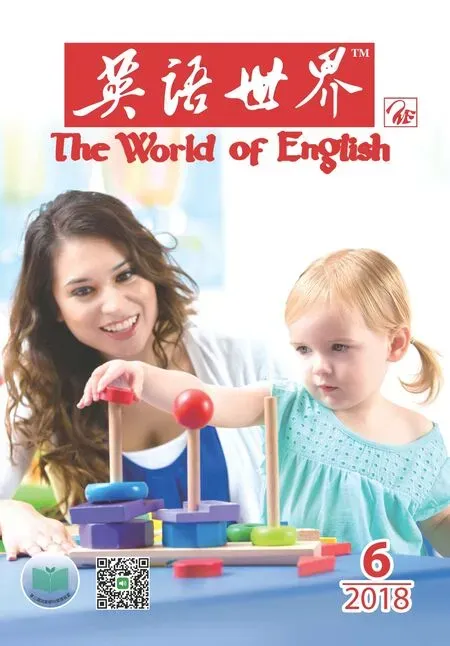Choosing a Preschool:Simple Tips for Parents
译/杨伟 审订/仲文明
(译者单位:中南大学外国语学院)
Parents across the country, you can relax. Contrary to what you might have heard, choosing the right preschool for your child is not as diff i cult as applying for an advanced degree.The key to choosing the right preschool is going into the process prepared. Prepared? Yes, prepared with a solid idea of what you want your child to gain from his or her preschool experience.This article offers helpful suggestions for choosing a preschool that is a good match for your child and your family, as well as information on some of the most popular types of preschool educational philosophies.
家长朋友们,你们可能听说过为孩子挑选合适的幼儿园难如申请高级学位,但事实并非如此,你们大可放心。挑选合适幼儿园关键在于提前研究挑选流程。提前研究?没错,家长首先明确自己期待孩子在幼儿园有何收获。本文就“挑选适合孩子和家庭的幼儿园”提出一些建议,也会介绍部分风行的学前教育理念。
Step one: think about the basics
The best way to keep from becoming overwhelmed by the process of choosing a preschool is to think about how the preschool will fit into your daily life. Here are some questions parents should consider:
第一步:考虑基本因素
选择幼儿园的流程往往让人眼花缭乱,因此最好考虑清楚目标幼儿园与日常生活是否契合。家长需考虑下列问题:
Is it important for the preschool to be near my home?
Is it important for the preschool to be near my workplace?
Is it important for the preschool to offer childcare services in the morning,afternoon, or both?
Am I eligible for or interested in subsidized preschool programs (i.e. Early Head Start, Child Welfare League of America or state-funded programming)that offer services such as childcare programs with a focus on providing educational opportunities?
Answering each of these questions will help you narrow down the general location and type of setting you should research. Narrowing down your choices will make the process of comparing settings easier to manage.
幼儿园是否需要离家较近?
幼儿园是否需要离工作场所较近?
幼儿园是否提供上午、下午或全日托管服务?
学前公益项目(如美国早期教育计划,美国儿童福利联盟或国家资助项目)提供儿童照管等服务,旨在为孩子提供教育机会。我是否有资格或者有意申请此类项目?
回答上述问题有助于家长缩小范围,确定所需了解的幼儿园大体位置和类别。而范围缩小将简化择校对比流程。

Step two: become familiar with common terms
For many parents, the most confusing part about choosing preschools is trying to make sense of terms such as,“Montessori Approach,” “child-centered,” “Waldorf Approach” and “faithbased.” What do these terms mean and how can these terms help you choose a preschool?
Oftentimes, the key difference between settings is connected to the preschool’s“educational philosophy.” While educational philosophies are numerous and their definitions are not set in stone, we have provided you with definitions for some of the most popular philosophies.
第二步:熟知常见术语
择校过程中,家长会听到很多术语,诸如 “蒙特梭利教学法”“以儿童为中心”“华德福教学法”和“基于信仰”等,很多家长对此摸不着头脑。这些术语有何含义?它们对家长挑选幼儿园有何帮助呢?
各类幼儿园的主要差异在于“教育理念”不同。虽然教育理念种类繁多,定义并非一成不变,我们列出了一些最常见教育理念的定义。
The Montessori Method
Focuses on maintaining the individuality of each child in the learning process.This method believes each child learns at their own pace and educational progress should not be rendered based upon comparing students to one another.
蒙特梭利教学法
该教学法强调在学习过程中尊重每个孩子的个性。该方法认为每个孩子拥有自身的学习进度,教学进度不应通过比较孩子的学习情况来决定。
The Reggio Emilia Approach
This approach focuses on providing opportunities for problem solving through creative thinking and exploration.
瑞吉欧教学法
该教学法强调让孩子通过创造性思维和探索来解决问题。
The Waldorf Approach
This approach places an emphasis on imagination in learning, providing students with opportunities to explore their world through the senses, participation and analytical thought.
华德福教学法
该教学法强调想象力在学习中的作用,让孩子们利用感知、参与和分析性思维来探索自身世界。
The Bank Street Approach
This approach places an emphasis on learning through multiple perspectives,both in the classroom setting and in the natural world.
河滨街模式
该教学法强调多视角学习,既要在课堂上也要在大自然中学习。
The High/Scope Approach
This approach focuses on letting children be in charge of their own learning. Children are taught to make a plan for what they would like to do each day and participate in a review session to discuss the success of their plan and brainstorm ideas for the next day.
Outside of the formal educational philosophies, knowing the difference between other common early childhood terms will help you make informed decisions regarding your child’s education.
高瞻学习法
该方法强调让孩子自主学习。孩子们在家长或老师的指导下制订每日计划,参与回顾性会议,讨论计划的成功之处并为第二天的学习制订计划。
除了上述专业教育理念,掌握其他常见幼儿教育术语之间的差异也有助于为子女教育做出精明决策。
Child-centered
This term is often used to describe settings that take the children’s interests into consideration when planning activities. For example: in a child-centered setting, the classroom activities are based on the interests of the students,not on pre-scheduled topics chosen by the teacher. These settings often offer increased opportunities for children to choose activities throughout the day depending on their interests.
以儿童为中心该术语通常用以描述策划活动时会考虑孩子兴趣的幼儿园。例如:在以儿童为中心

Teacher-led
The opposite of a child-centered setting is a teacher-led setting. Teacherled often means that curriculum and supplemental activities are implemented based on a set schedule developed by the teachers in the setting. This type of setting usually provides children with a structured learning environment.
教师主导
“教师主导”是与“以儿童为中心”相对的概念。此类教学模式中,课程安排与课外活动一般都根据授课老师的既定计划开展。此类模式一般安排周密,井然有序。
Child-led
These settings believe children learn best when they are engaged and interested in learning. Child-led settings wait for each child to initiate or ask for new activities and experiences, fostering individualized learning experiences rather than group experiences.
儿童主导
此类模式认为,只有专注投入、兴趣浓厚,才能获得最佳学习效果。“儿童主导”模式期待每个孩子发挥主动性,探寻新活动,获取新体验,培养个性化而非集体化的学习体验。
Faith-based
This term is used to describe preschool programs that are run through faith organizations such as churches or synagogues, according to their faith’s philosophies.
基于信仰
该术语指教堂或犹太教堂等基于信仰的组织兴办的学前教育机构。
Co-operative
These settings often ask parents and families to assist in the running of the preschool. Parents and family members may build community by signing up to volunteer during the week, or by assisting in the day-to-day management of the preschool as well as helping with advertising, upkeep and fundraising.
家校共建
此类模式经常要求父母或其他家庭成员协助幼儿园运行。父母或其他家庭成员通过参与下列活动形成团体:注册成为工作日志愿者,协助幼儿园的日常管理,帮助幼儿园宣传、维修和募款等。
Developmentally Appropriate
This term means the preschool plans the curriculum and activities based on activities that are appropriate for the age of the children in the class.
适度发展
该术语指基于孩子的年龄规划课程,安排与孩子年龄相适宜的活动。
Pre-kindergarten (pre-K)
Sometimes this term is used interchangeably with preschool. In general,a pre-K program is one that has children enrolled in the year before kindergarten,usually at age four. These settings are often more structured than traditional preschool settings.
学前班
该术语有时可以和“托儿所”换用。学前班通常指4岁左右的儿童进入幼儿园前一年读的学校,比传统的幼儿园更讲究条理。
Step three: the research
Once you have narrowed down the general area you are interested in researching and have a good idea of what type of philosophy would best suit your child, here are a few things you can do to help narrow down your options:
第三步:调查研究
确定了感兴趣的大致领域,明确了最适合孩子的教学理念后,便可通过下列做法进一步缩小选择范围:
Reach out to other parents: Ask your friends, your neighbors, your pediatrician, your older child’s teacher—ask people you trust for recommendations for quality settings in your area. Be mindful to note the name of the setting and what struck this person as important to mention (low student teacher ratio,close to home, child is excited to arrive, etc.). And, the best question to ask is, “What advice do you wish you had received before choosing your child’s preschool?” Most parents will be happy to offer their insight and advice.
与其他家长交流:咨询信任的人,如朋友、邻居、儿科医生、年龄较大孩子的老师,让他们推荐本地区的优质幼儿园。认真记下幼儿园的名称和推荐人提到的重要信息(如师生比低,离家近,孩子喜欢上课等)。另外,最值得提出的问题是:“在为孩子选择幼儿园前,你最希望获得什么建议?”大多数家长都乐于分享他们的见解和建议。

Go to the internet: You might be surprised to learn that your community has an active preschool networking community, a great place to tap into useful advice and resources. Or, you can use the internet to search the names of settings to find out if they have any “red flags” like numerous complaints from parents, health or safety violations, or other noteworthy issues. The Child Care Aware Web site makes it easy to search for preschools by zip code. The National Association for the Education of Young Children (NAEYC) Web site allows users to research preschools in their area that have NAEYC accreditation.
利用互联网:你也许会惊奇地发现自己所在社区就有十分活跃的幼儿园网络社区——这是寻找有用建议和资源的好去处。或者可以利用互联网搜索不同幼儿园的名称以检测它们是否被“亮过红灯”,例如:家长的抱怨、健康问题、安全违规以及其他值得注意的问题。输入邮政编码可以轻松在儿童关爱组织网站搜索到当地幼儿园。美国幼儿教育协会网站也可以搜索到该组织认证的幼儿园。
Step four: the visit
第四步:参观
Now that you have narrowed down your choices and come up with two or three settings you are interested in,schedule a time to visit each setting.You can learn a lot about a setting by the way staff approach introductory visits with you and your child. During your visit ask yourself the following questions:
把选择范围缩小到两三家幼儿园之后,就可以抽空逐个参观。在工作人员陪同你和孩子参观并介绍的过程中,便可充分地了解该幼儿园。参观期间可以思考下列问题:
Do I feel welcome here?
Does my child seem interested in what they have to offer?
Do the children in the setting seem happy?
How do the adults and children interact?
Is the setting clean and safe?
You should also come to the visit prepared with questions. Some of the basic questions parents ask are:
What is the turnover rate for staff members?
What percentage of the staff hold degrees in early childhood?
How does the setting handle discipline?
What are the safety procedures for picking up and dropping off children?
Is the setting accredited?
What are the payment options and procedures?
这儿的员工热情吗?
孩子对幼儿园提供的东西感兴趣吗?
在校的孩子们快乐吗?
老师和孩子们是如何相处的?
该幼儿园清洁安全吗?
你应该带着问题参观幼儿园。下列是家长通常问及的一些问题:
老师的流动率有多高?
获得学前教育学位的老师占比多少?
该幼儿园如何处理纪律问题?
接送孩子的安全规章是什么?
该幼儿园有资格认证吗?
缴费的选择和程序有哪些?
Some parents feel more comfortable going to the visit with a checklist of questions they would like answered.Parents should not feel like they need to ask every question on the checklist,however, using a checklist is a great way to make note of your observations during the visit so you can compare settings afterward.
有些家长觉得参观时带上一份他们想要了解的问题清单会更踏实。家长可能觉得不需要询问清单上的每个问题,但是,在探访过程中,清单的使用便于记录自己的所见所感,为之后的比较做好准备。
Remember, choosing the best preschool for your child does not have to be an overwhelming task. Successful parents go into the process aware, informed and ready to ask questions. Being prepared will make the process eff icient, effective and meaningful for you and your child. ■
请记住,为孩子选择最好的幼儿园并非困难重重。做得好的家长会探究流程,获取信息,时刻准备提问。对于家长和孩子而言,提前做好准备将会让择园进程更高效、更有意义。 □

Recommended Books for Preschoolers
Alexander and the Terrible, Horrible, No Good, Very Bad Day
This Judith Viorst book is unique in the sense that it doesn’t resolve with a nice little gift-wrapped ending on the last page. It merely accounts the end of a pretty lousy day that Alexander had; one that involves getting gum in his hair, not having dessert in his lunch sack, a cavity at the dentist, and kissing on television. The cynical amongst us can point to this book and say that it is a perfect lesson that shows kids that not every day is going to be filled with rainbows, lollipops, and the sunshine. The rest can just sit back and enjoy how it perfectly captures the spirit of a little boy that just wants to put a crummy day behind him, one rambling run-on sentence at a time. Be forewarned: The book may make you want to plan a trip to Australia.

